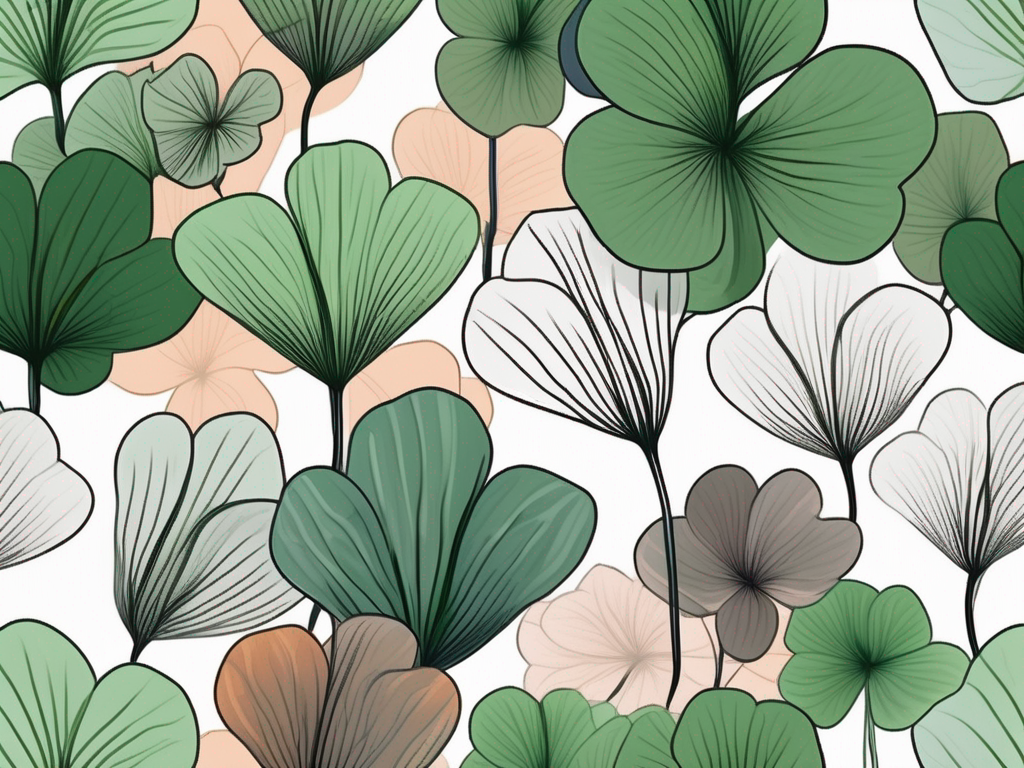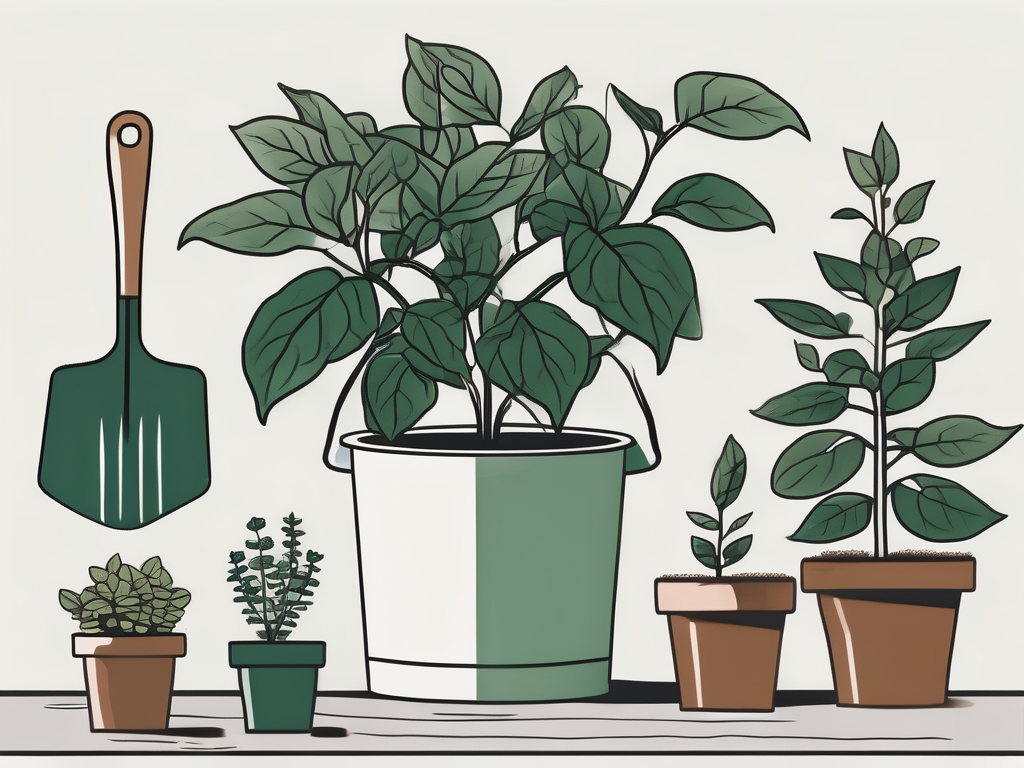
Oxalis, often referred to as "wood sorrel," is a delightful and diverse genus of plants that brings a splash of color and charm to gardens and indoor spaces. With delicate, clover-like leaves and vibrant flowers, these plants are more than just pretty faces. They come in a variety of species, each with its own unique characteristics and care requirements. For plant lovers looking to add a touch of whimsy and color to their home, Oxalis might just be the perfect choice.
This article will explore the different types of Oxalis, offering insights into their distinctive features and tips for keeping them happy and healthy. Whether you're a seasoned plant parent or just dipping your toes into the world of houseplants, this guide will help you navigate the wonderful world of Oxalis.
Getting to Know Oxalis
Let's start with the basics. Oxalis are part of a genus that includes over 800 species, making them incredibly diverse. Found in various parts of the world, they can thrive in a range of conditions—from the tropics to temperate regions. What makes them particularly popular among plant people is their enchanting foliage and flowers, which come in a variety of colors and shapes.
Most Oxalis species boast trifoliate leaves, reminiscent of clover, which can sometimes be tinged with hues of purple, red, or green. The flowers, although small, are usually brightly colored and can be yellow, pink, or white. This combination of foliage and flowers means Oxalis can add visual interest to any space.
Interestingly enough, many Oxalis species are sensitive to light. This means their leaves might open and close in response to the sun's movement—a fascinating feature that can delight both new and experienced plant parents. So, now that you have a brief overview, let's look at some of the most popular and intriguing types of Oxalis you might consider adding to your collection.
Oxalis Triangularis: The Purple Shamrock
If you've ever seen an Oxalis with striking purple leaves, you've likely encountered the Oxalis Triangularis, or Purple Shamrock. This species is a favorite among plant enthusiasts due to its deep purple, triangular leaves which fold up at night and open during the day, almost like a daily performance for its owner.
Caring for Oxalis Triangularis is relatively straightforward. They thrive in bright, indirect light, though they can tolerate some direct sunlight if it's not too harsh. When it comes to watering, they prefer to be kept moderately moist. However, they don't like sitting in water, so ensure their pots have good drainage.
One of the perks of owning this plant is its resilience. If it appears to die back, don't panic. It often goes dormant, especially in the winter months. Simply reduce watering and let it rest. With the return of spring, it will likely bounce back with vigor.
- Light: Bright, indirect light
- Water: Keep moderately moist; do not overwater
- Temperature: 60-75°F (15-24°C)
- Humidity: Average household humidity is fine
Oxalis Regnelli: The Lucky Clover
Oxalis Regnelli, often referred to as the "Lucky Clover," is another popular species. Its bright green leaves are reminiscent of a classic clover, making it a favorite around St. Patrick's Day. The plant features small white flowers that add a lovely contrast to the vibrant leaves.
This type of Oxalis prefers a spot with indirect sunlight. Too much direct light can scorch its delicate leaves, while too little can lead to leggy growth. Keep the soil lightly moist but be careful not to overwater, as this can lead to root rot. Like Oxalis Triangularis, it may go dormant, especially if conditions aren't ideal. If this happens, reduce watering and wait for new growth, which will likely come with the change of seasons.
- Light: Indirect sunlight
- Water: Lightly moist; avoid soggy soil
- Temperature: 60-75°F (15-24°C)
- Humidity: Tolerates average humidity levels
Oxalis Versicolor: Candy Cane Sorrel
Oxalis Versicolor earns its charming nickname, "Candy Cane Sorrel," from its unique and striking flowers. These blossoms are white with red edges, resembling the stripes of a candy cane—a truly festive appearance that makes it a popular choice during the holiday season.
This species loves the sun, so it's best to place it in a spot with plenty of bright, direct light. It requires well-draining soil, as excess moisture can cause root problems. Water sparingly, allowing the soil to dry out between waterings.
Candy Cane Sorrel is slightly more challenging to grow indoors compared to other Oxalis, as it prefers cooler temperatures. If you live in a milder climate, you might consider growing it outdoors in a pot that can be moved inside during extreme weather conditions.
- Light: Bright, direct light
- Water: Allow the soil to dry out between waterings
- Temperature: 50-65°F (10-18°C)
- Humidity: Prefers lower humidity
Oxalis Deppei: Iron Cross
Oxalis Deppei, commonly known as the "Iron Cross," is easily recognizable by its unique leaf pattern. Each leaf features a dark purple cross at its center, surrounded by bright green. This eye-catching design makes it a striking addition to any plant collection.
This type of Oxalis loves warm temperatures and bright, indirect light. It's a hardy plant that can tolerate some neglect, making it a great option for busy plant parents. However, like many Oxalis, it can go dormant, especially if conditions are not ideal. In such cases, reduce watering and wait for it to reemerge with new growth.
While it can be grown indoors, the Iron Cross is also popular in outdoor gardens. It can serve as a lovely ground cover or be planted in pots for added versatility.
- Light: Bright, indirect light
- Water: Moderate; keep the soil evenly moist
- Temperature: 60-75°F (15-24°C)
- Humidity: Average household humidity
Oxalis Latifolia: Broadleaf Wood Sorrel
Oxalis Latifolia, or Broadleaf Wood Sorrel, is known for its larger leaves compared to other species. These leaves are typically bright green and can form a lush, attractive clump, making it a lovely choice for ground cover or potted arrangements.
This species does well in partial shade, making it a great option for areas that don't receive full sun. It prefers a well-draining soil mix and should be watered regularly to keep the soil consistently moist but not soggy.
Oxalis Latifolia is a bit more tolerant of varying conditions, which makes it a good choice for beginners. Just keep an eye out for pests like aphids and spider mites, which can occasionally become an issue.
- Light: Partial shade
- Water: Regular, consistent moisture
- Temperature: 60-75°F (15-24°C)
- Humidity: Does well in normal humidity
Oxalis Corniculata: Creeping Wood Sorrel
Oxalis Corniculata, or Creeping Wood Sorrel, is often found growing wild and is sometimes considered a weed due to its ability to spread quickly. However, its small, heart-shaped leaves and yellow flowers can be quite charming, especially when managed properly in a container or garden bed.
This species thrives in a variety of light conditions, from full sun to partial shade. It's quite adaptable when it comes to soil, but good drainage is still important to prevent waterlogging. Water when the top inch of soil is dry.
While its resilience and spreading nature can be a boon, it's important to keep it contained to prevent it from overtaking other plants. Regular pruning can help keep its growth in check and maintain its appearance.
- Light: Full sun to partial shade
- Water: Allow the soil to dry out slightly between waterings
- Temperature: 60-80°F (15-27°C)
- Humidity: Tolerates a wide range of humidity
Dealing with Common Oxalis Problems
Despite their charms, Oxalis plants can sometimes face issues like pest infestations or overwatering. Fortunately, many of these problems can be managed with a bit of vigilance and care.
Pests: Common pests that affect Oxalis include aphids, spider mites, and whiteflies. Regularly inspect your plants and use insecticidal soap or neem oil as needed. Ensuring good airflow around your plants can also help prevent infestations.
Overwatering: Oxalis are prone to root rot if overwatered. Make sure your pots have drainage holes and that you allow the top inch of soil to dry out between waterings. If your plant appears droopy or the leaves start to yellow, it might be getting too much water.
Leaf Spot: Fungal leaf spots can occur, especially in humid conditions. Remove affected leaves and ensure your plant has good air circulation. Avoid getting the leaves wet when watering.
By staying attentive and making minor adjustments, you can keep your Oxalis thriving and avoid common pitfalls.
Incorporating Oxalis into Your Home Decor
Oxalis plants aren't just about pretty leaves and flowers—they can also be a fantastic addition to your home decor. Their variety of colors and leaf shapes make them versatile choices for different interior styles.
Consider placing Oxalis plants in spots where their unique foliage can be showcased. A windowsill is a classic choice, especially for varieties like Oxalis Triangularis that enjoy bright, indirect light. Hanging planters can also be a fun way to display their cascading leaves.
Group different types of Oxalis together for an interesting display of color and texture. You can even mix them with other houseplants to create a diverse and lively arrangement. Just be sure to match plants with similar light and water needs for the best results.
Whether in a pot on your coffee table or as part of a larger indoor garden, Oxalis can bring a touch of nature's artistry into your living space.
Final Thoughts
Oxalis plants, with their fascinating foliage and delightful flowers, make a wonderful addition to any plant collection. Understanding the unique characteristics and care requirements of each type can help ensure they flourish in your home.
At Cafe Planta, we’re here to support you on your plant journey, whether you’re just starting out or have a well-established collection. We offer a variety of houseplants and plant care accessories to help you cultivate a thriving indoor garden. If you have any questions, feel free to email us or reach out on Instagram. We love to connect with fellow plant lovers and share our passion for greenery!












